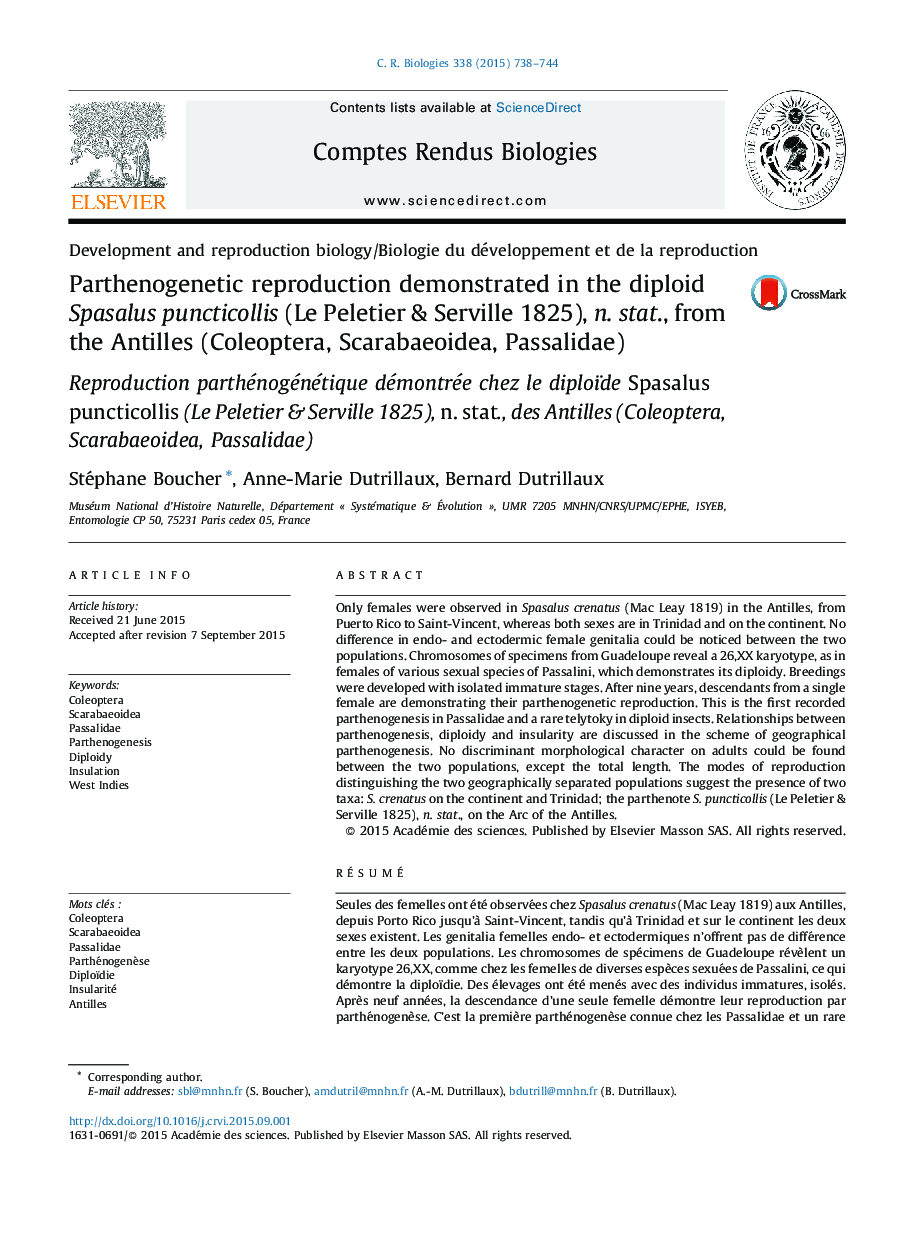| کد مقاله | کد نشریه | سال انتشار | مقاله انگلیسی | نسخه تمام متن |
|---|---|---|---|---|
| 2783335 | 1153737 | 2015 | 7 صفحه PDF | دانلود رایگان |

Only females were observed in Spasalus crenatus (Mac Leay 1819) in the Antilles, from Puerto Rico to Saint-Vincent, whereas both sexes are in Trinidad and on the continent. No difference in endo- and ectodermic female genitalia could be noticed between the two populations. Chromosomes of specimens from Guadeloupe reveal a 26,XX karyotype, as in females of various sexual species of Passalini, which demonstrates its diploidy. Breedings were developed with isolated immature stages. After nine years, descendants from a single female are demonstrating their parthenogenetic reproduction. This is the first recorded parthenogenesis in Passalidae and a rare telytoky in diploid insects. Relationships between parthenogenesis, diploidy and insularity are discussed in the scheme of geographical parthenogenesis. No discriminant morphological character on adults could be found between the two populations, except the total length. The modes of reproduction distinguishing the two geographically separated populations suggest the presence of two taxa: S. crenatus on the continent and Trinidad; the parthenote S. puncticollis (Le Peletier & Serville 1825), n. stat., on the Arc of the Antilles.
RésuméSeules des femelles ont été observées chez Spasalus crenatus (Mac Leay 1819) aux Antilles, depuis Porto Rico jusqu’à Saint-Vincent, tandis qu’à Trinidad et sur le continent les deux sexes existent. Les genitalia femelles endo- et ectodermiques n’offrent pas de différence entre les deux populations. Les chromosomes de spécimens de Guadeloupe révèlent un karyotype 26,XX, comme chez les femelles de diverses espèces sexuées de Passalini, ce qui démontre la diploïdie. Des élevages ont été menés avec des individus immatures, isolés. Après neuf années, la descendance d’une seule femelle démontre leur reproduction par parthénogenèse. C’est la première parthénogenèse connue chez les Passalidae et un rare cas de télytokie chez les insectes diploïdes. Les relations entre parthénogenèse, diploïdie et insularité sont discutées dans le cadre de la parthénogenèse géographique. Aucun caractère morphologique discriminant ne permet de séparer les deux populations, à l’exception de la longueur totale. Les modes de reproductions distinguant les populations géographiquement séparées suggèrent la présence de deux taxons : S. crenatus sur le continent et à Trinidad ; le parthénote S. puncticollis (Le Peletier & Serville 1825), n. stat., sur l’arc des Antilles.
Journal: Comptes Rendus Biologies - Volume 338, Issue 11, November 2015, Pages 738–744